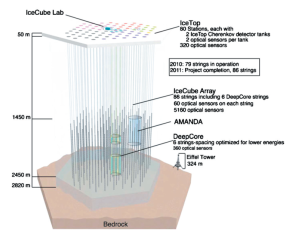John Tolley, August 20, 2019
At the very bottom of our planet lies an observatory unlike any you?ve seen before. There is nary a telescopic lens to be found; in fact, to the naked eye this observatory looks, well, fairly unimpressive. But that?s only because the service building that sits on the snowy surface is only the tip of the iceberg - pun intended. Reaching 2,820 meters beneath the Antarctic ice, one cubic kilometer of finely tuned optical modules watches for evidence of one of the most mysterious particles in our universe: neutrinos.
The largest observatory of its kind, the University of Wisconsin?s IceCube Neutrino Observatory has been detecting these particles since the first string was bored out in the austral summer of 2005.

Although neutrinos - the products of cosmic nuclear events - are omnipresent in nature, their low mass and lack of electrical charge make them exceedingly difficult to detect. To counter their elusive nature, neutrino telescopes have to be massive in order to pick up an adequate number of particles. Further, they are often built underground in order to insulate them from cosmic rays and background radiation.
Why all the interest in neutrinos? Because they are forged in the cosmic crucibles of supernovae and the Big Bang, neutrinos help us more thoroughly map out and understand our evolving universe. From aiding in the search for dark matter to potentially providing experimental evidence of supersymmetrical string theory?s predicted extra dimensions, IceCube is at the forefront of humanity?s exploration of the basic building blocks of nature.
Recently, IceCube received $37 million in funding to upgrade and enhance their capabilities. With assistance from international partners Japan and Germany and fellow Big Ten conference member Michigan State University, researchers will add seven new optical module studded strings to the observatory?s 86 current stings. This should allow for the detection of higher-energy neutrinos and a deepen our understanding of particle oscillation.
To learn more about the upgrades and the implications it has for the Standard Model of physics, check out the University of Wisconsin?s full article here.







